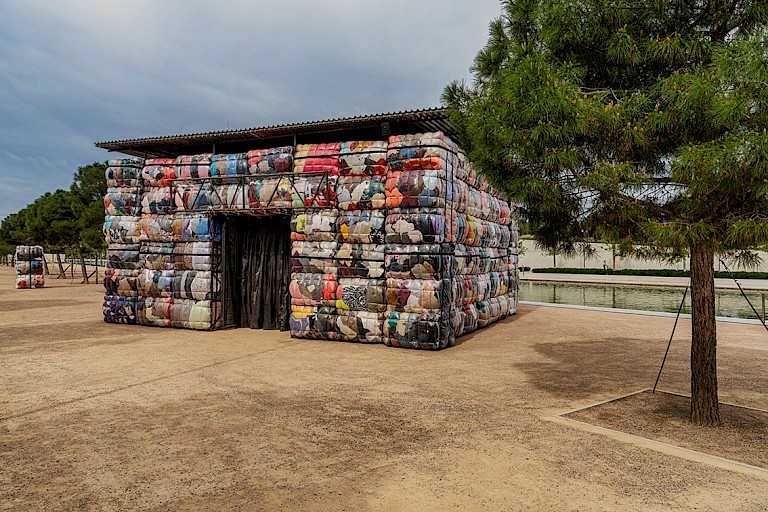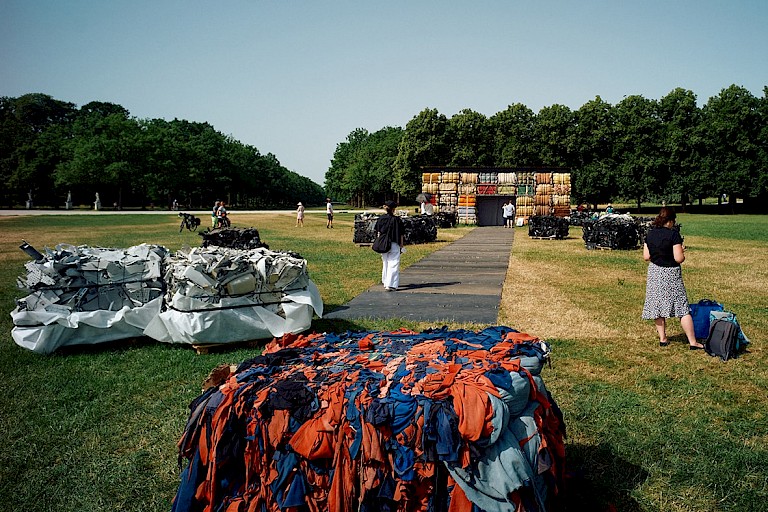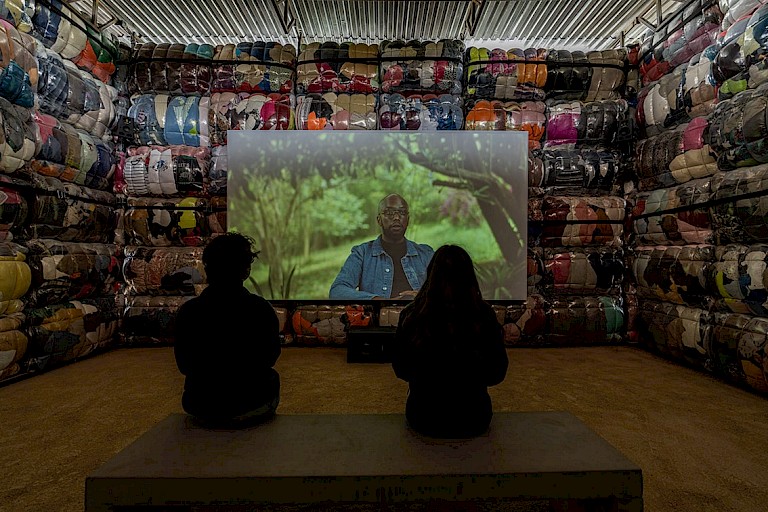



Return to Sender is an installation that delicately unravels the intricate transactions between the Western world and the developing nations. The Nest Collective, through this work, adeptly draws our attention to a system of transfer that, on the surface, may appear benign and even altruistic. However, as we delve deeper into this installation, we begin to perceive the underlying mechanics and ethical imbalances inherent in the trade and transfer of second-hand garments from the economically affluent North and West to less privileged regions.
One of the most prevalent means of acquiring second-hand garments from their initial owners is through seemingly charitable donations. This act is often perceived through the lenses of compassion, care, and a sense of responsibility for others and the environment, which is truly commendable. Return to Sender provocatively challenges the notion that what occurs after these garments are collected remains shrouded in obscurity. The installation exposes that the motives and intentions of the value chains involved in this trade are often exploitative and deceptive.
The Return to Sender pavilion at Documenta 15 has been described as that editions’ largest art object.
The sheer size of the pavilion effectively serves as a metaphor that calls attention to the magnitude of the issues around and consequences emerging from the current state of the trade in second-hand.
Moreover, the quality of garments in clothing bales has become questionable, raising concerns that the second-hand garments channeled to marginalized parts of the world are deemed 'less desirable' in their places of origin. Tragically, many of these clothes end up in dumpsites and landfills, wreaking havoc on the environment and nature. The pavilion itself has been ingeniously designed to resemble a 'mountain of waste,' emphasizing the pressing need to address the issue of waste.
The second-hand garment market in Kenya gained momentum in the 1980s. By 2021, the total value of second-hand clothes and apparel imports to sub-Saharan Africa reached a staggering 1.734 billion USD, making the largest physical market for second-hand garments 'Kantamanto' in Accra, Ghana. The introduction of second-hand clothing in Kenya brought about significant changes, notably the gradual decline of local agro-textile production and textile processing due to consumers shifting towards cheaper, often exotified 'products/brands from abroad,' even though they were previously owned. The second-hand garment market eventually engulfed the local textile infrastructure and industry.
In Return to Sender, Sunny Dolat and the Nest Collective delve into the dynamics of second-hand consumer apparel and their impact in the global South. This work also explores the conflicting ethos inherent in this trade.
Through the art presented in this pavilion, Nest Collective challenges the perception of 'charity' that has long characterised the relationship between the origins and destinations of second-hand garments
One of the most prominent aspects examined in this installation artwork is the limited options and opportunities available to the communities at the final markets for second-hand garments. The artist and collective highlight the deception surrounding the contents of a bale of clothes. In a recorded interview, Sunny Dolat observes that a substantial percentage of garments within a bale may not be of sufficient quality for resale or further use. Buyers have no assurance regarding the quality of the items within each bale, and the unusable parts ultimately end up as waste in dumpsites and landfills. This underscores the directional movement of the second-hand garment trade from the global economic 'North and West,' and Return to Sender brings the issue of waste dumping to the forefront, intricately woven into the mechanics of this market. The Pavilion is designed to create the impression of a 'mountain of waste.'




